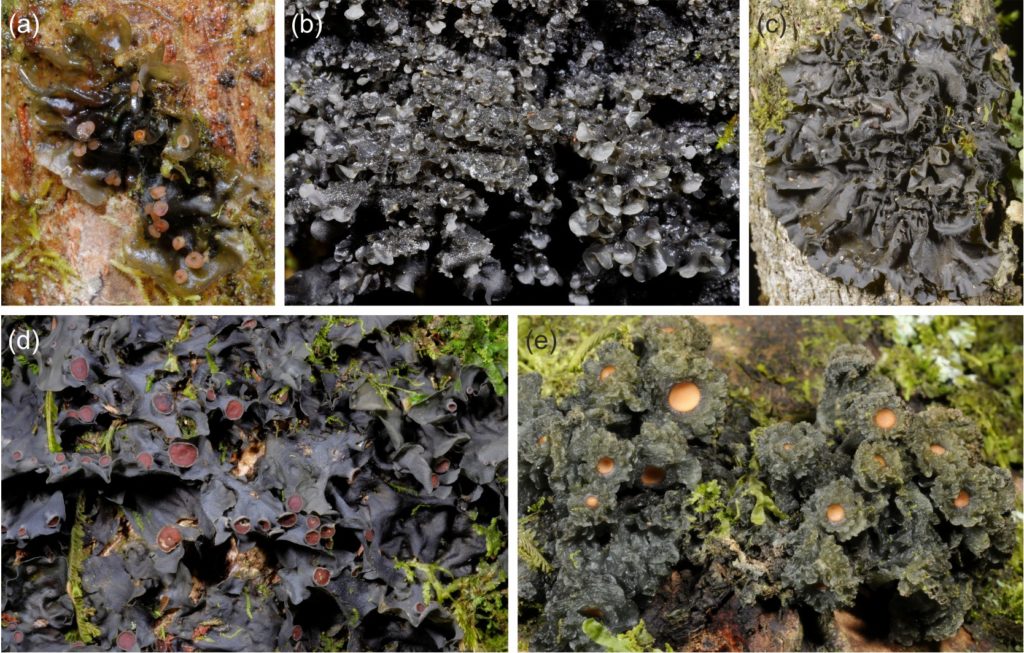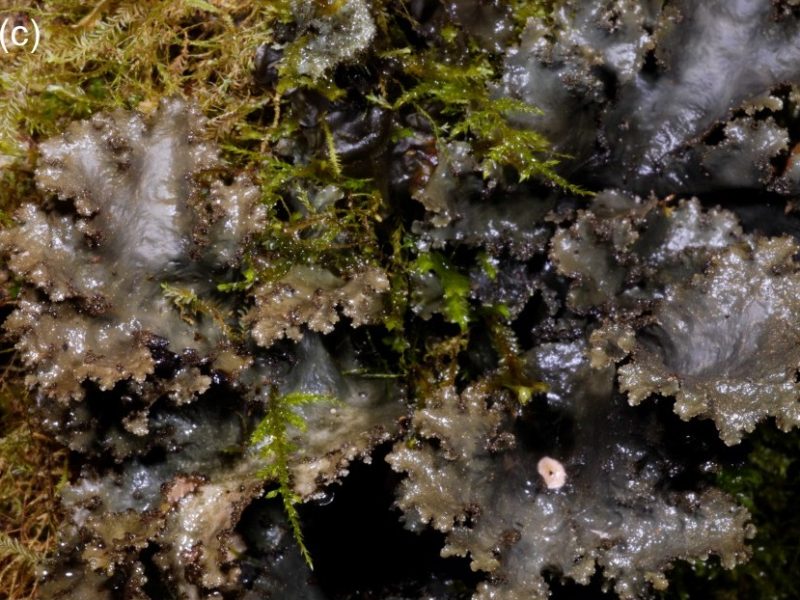Tropical mountains harbor a wide range of ecosystems, all providing habitats for various sets of organisms, including lichens. For example, the lichens in the savanna and woodland on the base of the mountains are often more draught and heat tolerant than the species in the often very humid montane forest zones. In East African montane forests, Leptogium (Peltigerales, Ascomycota) is one of the most abundant lichen genera. Recently, Leptogium diversity in East Africa was discovered to be much higher than previously known, encompassing over 70 putative species, including nine established species previously known from the area and over 60 phylogenetically, morphologically, and/or ecologically defined Operational Taxonomic Units (OTUs). Many of the putative species are so far only known from specific ecosystems and/or restricted habitats and thus threatened by ongoing habitat fragmentation and degradation of the natural environment. Since the diversity of lichens in tropical Africa is still especially poorly known, similar findings may emerge also from other lichen groups. The results also revealed that many traditional species concepts in Leptogium actually represent morphotypes comprised of several separate phylogenetic lineages, emphasizing the importance of molecular markers in species inventories of highly diverse organism groups and geographical areas.
Kaasalainen U, Tuovinen V, Kirika PM, Mollel NP, Hemp A, Rikkinen J. 2021. Diversity of Leptogium (Collemataceae, Ascomycota) in East African Montane Ecosystems. Microorganisms 9: 314, doi.org/10.3390/microorganisms9020314.

Keywords: Eastern Afromontane biodiversity hotspot, Mount Kilimanjaro, Taita Hills, Mount Kasigau, mtSSU, nuITS, Leptogium austroamericanum, Leptogium burnetiae, Leptogium caespitosum, Leptogium ethiopicum, Leptogium javanicum, Leptogium juressianum, Leptogium krogiae, Leptogium marginellum, Leptogium resupinans, Leptogium adpressum, Leptogium azureum, Leptogium brebissonii, Leptogium burgessii, Leptogium cochleatum, Leptogium coralloideum, Leptogium cyanescens, Leptogium laceroides, Leptogium phyllocarpum, Leptogium sessile, Leptogium rivulare

